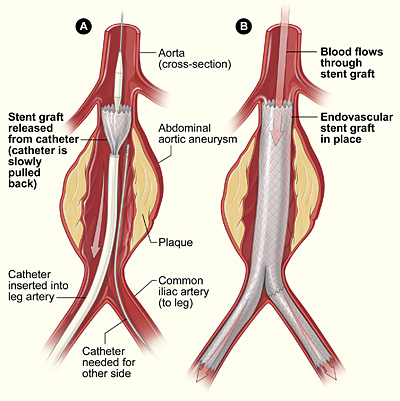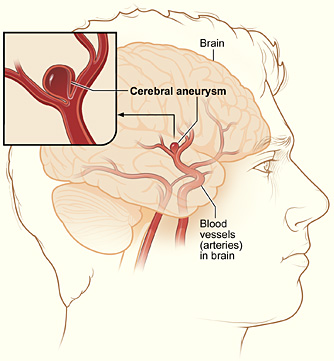Recommended specialists
Article overview
Aneurysm surgery - Further information
Aneurysms can occur in various regions of your body, including:
- the aorta — your body’s primary blood vessel that carries blood from your heart to vital organs (aortic aneurysm)
- the aorta segment passing through your abdomen (abdominal aortic aneurysm)
- the aorta segment passing through your chest (thoracic aortic aneurysm)
- the blood vessels carrying blood to your brain (brain aneurysm)
- the blood vessels in your legs, groin, neck or other parts of your body (peripheral aneurysm)
With some smaller aneurysms, there can be a lower risk of rupture. Your doctor will seek to clarify the risk of rupture by assessing the size, location and appearance of your aneurysm, and by asking about your medical and family history. This information will be used to decide whether to manage or treat the aneurysm.
Symptoms of aneurysms
The symptoms of a particular aneurysm vary and will be associated with its type and location. It’s important to understand that aneurysms that develop in the brain or elsewhere in the body usually won’t present symptoms until they rupture.
Aneurysms close to the surface of the body can show evidence of swelling and pain, and a large mass may also be present. When an aneurysm bursts, the symptoms can include:
- bleeding
- increased heart rate
- pain
- a dizzy or light-headed feeling
Causes of aneurysms
Although experts don’t know all the reasons aneurysms occur, it is clear certain factors contribute to the condition. For instance, damaged tissue within the arteries are a feature. Arteries can be harmed by blockages that are often caused by fatty deposits. This material can force the heart to pump harder in order to push blood past the fatty accumulation. The stress created by this increased pressure can have a damaging effect on arteries.
Atherosclerotic disease
Atherosclerotic disease can also cause the development of an aneurysm. Those with atherosclerotic disease experience the build-up of plaque within their arteries. Plaque is a hard material that damages arteries and restricts the normal free flow of blood.
High blood pressure
High blood pressure may also contribute to the development of an aneurysm. The force with which blood travels around your body through your blood vessels is measured by the amount of pressure it exerts on your artery walls. If this pressure becomes abnormally high, it may begin to weaken and enlarge those blood vessels.
Normal adult blood pressure is measured at or below 120/80 mm Hg (millimetres of mercury). Any reading significantly higher than this represents an increased risk factor for heart, blood vessel and circulation problems. Unusually high blood pressure won’t necessarily place you at risk of experiencing an aneurysm.
Diagnosis of aneurysms
Which diagnostic tools are chosen to investigate arterial damage can often depend on the location of the problem. That’s why your doctor may refer you on to a specialist, such as a cardiothoracic or vascular surgeon.
Ultrasound and CT scans are the typical tools used to find and diagnose blood vessel issues. Viewing X-rays created via CT scans allows doctors to check and examine your body from the inside. They can investigate the condition of blood vessels and spot any blockages, bulges or weak spots that may be present.
Treatment of aneurysms
Treatment usually depends on the location and kind of aneurysm discovered. For instance, a weak area of a chest blood vessel may require a surgical procedure known as an endovascular stent graft. This is a minimally invasive operation that is preferable to the standard open-surgery procedure, which involves repairing and then reinforcing the deteriorating blood vessels. In addition, this innovative procedure also lowers the risks of scarring and infection.
Medications may also be prescribed to remedy high blood pressure and high cholesterol. Bringing blood pressure down may help to prevent the risk of a ruptured aneurysm.
Endovascular stent graft
Chances of recovery from aneurysms
Survivors of brain aneurysms are an example of the challenging post-treatment circumstances that can often ensue. Emotional changes are common after surgical intervention. Some patients must try to overcome deficits in their cognitive (thinking) abilities. These changes affect caregivers too, and their strong and loving support is a crucial factor in any successful rehabilitation. More information about brain aneurysm can be found on the brain aneurysm foundation website.
Brain aneurysm
Prevention of aneurysms
- A healthy diet may help prevent the formation of an aneurysm. Good protein options include meat and poultry low in saturated fat and cholesterol. Low-fat dairy products are also a desirable choice.
- Taking regular exercise promotes healthy blood circulation, which benefits your heart, arteries and blood vessels.
- If you smoke, stop now. Eliminating tobacco can lower your aneurysm risk.
- You should also have an annual medical check.


















